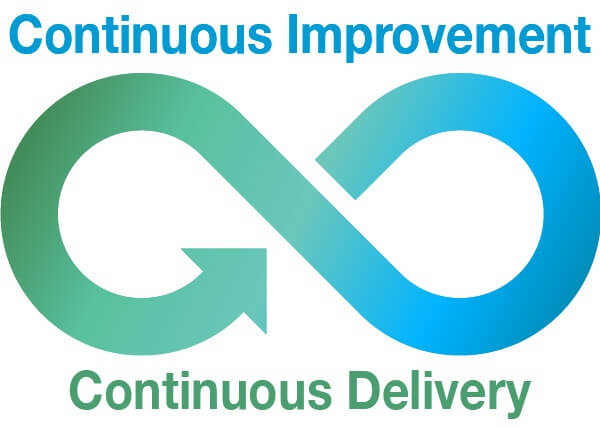Asking the Right Questions

What do you think would emerge if you read the blogs, commentaries and posts/articles on the multiple HOW focused websites and publication newsletters as the ‘KEY’ issue for any congregation planning on dealing with an AV project?
One guess. Did you say BUDGET?
Superficially that is what seems to be front of mind — at least based on the amount of ink and electrons devoted to discussing the issue.
However, we would respectfully disagree with that singular fiscal focus.
Without question budget limitations and requirements for funding are a major concern and one that must enter into any project’s development process. But, they are not and should not be the overriding concern for any AV industry professional or HOW decision maker(s).
What should take the top spot for both supplier and client is getting the proper answers to the right questions. The budget is the budget (sort of), but how will you know if you have one that even comes close to meeting the “needs” you have in mind if you don’t get reliable and focused answers to the questions you should be asking.
A few months ago I wrote an article about the smaller HOW facilities which are left out of consideration by far too many AV professionals (see: The 500 Million $ Mistake). Perhaps you are one of those smaller HOW facilities and are having a hard time getting anyone to pay attention to your project or even to answer your phone calls.
Well, don’t give up, and don’t feel ignored. There are industry pros out there who DO want to work with you and DO want to help — you just need to find them.
Finding a Partner
It may not be immediately apparent, but there are any number of other congregations within a reasonable distance circle of your location with exactly the same problem. Let’s say we call that circle 100 miles in diameter or about a two hour drive. Why that window? Because it’s on average the distance most potential project partners will travel readily, based on the average feedback we have gotten over the years.
 So… get out your maps or call one up online and draw or mark a circle within that two-hour drive from your location. Almost any online mapping program will do that easily — for this purpose a close-enough estimate is fine.
So… get out your maps or call one up online and draw or mark a circle within that two-hour drive from your location. Almost any online mapping program will do that easily — for this purpose a close-enough estimate is fine.
Now search the towns, villages, cities, etc. within that area for worship congregations (not just your own denomination). I am willing to guess that there are a few dozen at least — and probably most of them are not mega-churches or giant multi-campus organizations.
Cooperate, Coordinate, Collaborate
By creating the list of other congregations you have also created a list of information sources and possibly collaborative resources as well. Wondering how this could work?
Lets back up and look at the original problem — you can’t find a technical partner (integrator, contractor, consultant) to take on your project. But what if there were two or three or four projects all within that two-hour drive circle, all needing the same kind of help, and all looking for solutions. The odds are that there are other congregations facing the same issues you are facing. By finding them, reaching out, establishing a connection and possibly joining forces you “as a group” can present an opportunity to a potential technical resource provider that is now more attractive from a business and from a relationship development standpoint.
In our own practice we have been approached several times by one small congregation and by working with the concepts outlined above and joining their project with one or two others we had heard from individually we can help them all save time, better manage their budgets and coordinate equipment and acoustical material purchases to get better quantity pricing.
This three-way approach (coordinate, collaborate, cooperate) is also one that can help build long-lasting relationships among these congregations and their surrounding communities. By “discovering” each other in the majority of cases you are likely to find that there are many opportunities for cooperation and collaboration that help everyone.
After all, even when you look at the myriad variations in a worship service, there is at the core a basic belief structure that has commonality and more importantly familiarity. Certainly, each congregation and denomination has its own specific style, requirements, practices and methods, but the essential needs for all are the same — a way to present the ‘WORD’ to their congregants effectively and intelligibly.
Together Is Stronger Than Separate
The concept of working with others should be something that can be effectively implemented by any congregation. After all, the ideals of shared experience are familiar to all. By finding a way to create a ‘collective’ among several individual small congregations you essentially create one large one from a technical sales and service perspective and that is the goal you want to achieve.
Asking Questions and Getting Individualized Answers
Hopefully, you were successful and found a way to form a temporary ‘collective’ congregation and make contact with one or more professional services suppliers (acoustics, systems integration, etc.). Congratulations.
Now you actually have some serious work to do to make this concept function and gain the most out of the methodology. In fact, the next steps are THE most important part of the whole process.
What Do You Need to Know and How to Find Out
Finding specific answers tailored to each congregation’s unique needs and goals, yet combining the overall needs into a group style purchase arrangement for cost management will require several carefully executed steps.
1. Each congregation needs to meet and create its own needs, wants and goals list. By this, I mean that you need to write down/document as carefully and as precisely as possible what your specific requirements are. Do you need (or think you need) a new console, for example, new microphones, new video hardware and so forth? Brands and technical details are not the goals here — functions and end-results are!
2. Once each congregation has accomplished this task, you need to meet as a group (one to two people from each organization should suffice) and look over the individual lists for commonalities and similarities. There will be some, and there will also be requirements unique to each facility. At the group meeting you need to create two additional lists — one detailing the commonalities and similarities and one for each group breaking out those issues and needs specific to that congregation that doesn’t line up with the common needs list.
3. After both sets of the list are done, each group should meet again to review both lists — to determine that you ALL agree internally with the items on the list of common needs/goals. If not make note of where you don’t so that those points can be re-reviewed and hopefully resolved.
4. Once all stakeholders in your consortium/collective have agreed to the “common” list it’s time to organize meetings with the chosen vendors and/or professional service suppliers to discuss those and work out how best to implement the targeted goals for each facility as well as defining and matching up timelines with acquisition requirements.
5. At those same meetings, breakout sessions for each congregation to discuss their ‘non-common’ lists with the suppliers should take place. The goal is to end these meetings with a timeline, specific calendar dates and schedules of what happened where and when, and get the needed pricing and related information from each provider, for each congregation so you can manage and control your budgets and the suppliers can calculate what kind of composite pricing they can offer.
We have found, having gone through this process many times, that rotating the meeting locations among the group’s locations is extremely useful because it will help familiarize the suppliers/consultants with each congregation, their building, their worship style, etc., greatly improving understanding and largely eliminating any potential confusion or assumptions from the process.
It is important to recognize that all this may end up taking a month or longer to play out, but it will be time well spent and the end result should be a better solution for each congregation than you could have achieved individually.
The Needs of the Many
While at first glance this whole process might seem complex and cumbersome, it isn’t IF everyone is committed to working together to maximize the upside results for all congregants and is willing to separate their own specific or specialized items from the larger common goals.
Over the course of multiple versions of this project process we have found that the saving in budget, time, and improvement always justifies the effort. The key is being willing to put in the effort. You can do this — just think about it and work out the best process for your congregation and then pick up the phone and start calling your neighbors and open a dialog.
Besides you can usually organize some nice lunches or BBQs or whatever works for your group and make new friends and enjoy the fellowship.





